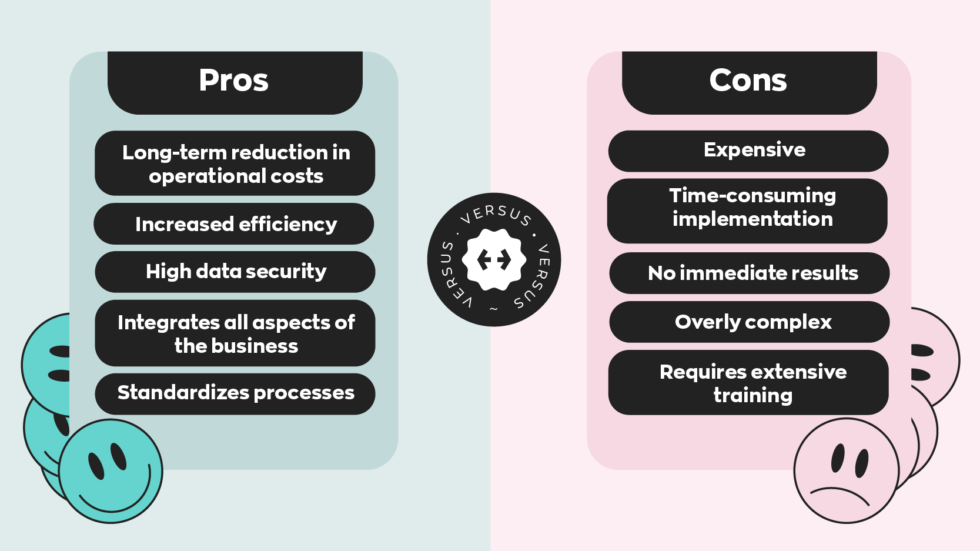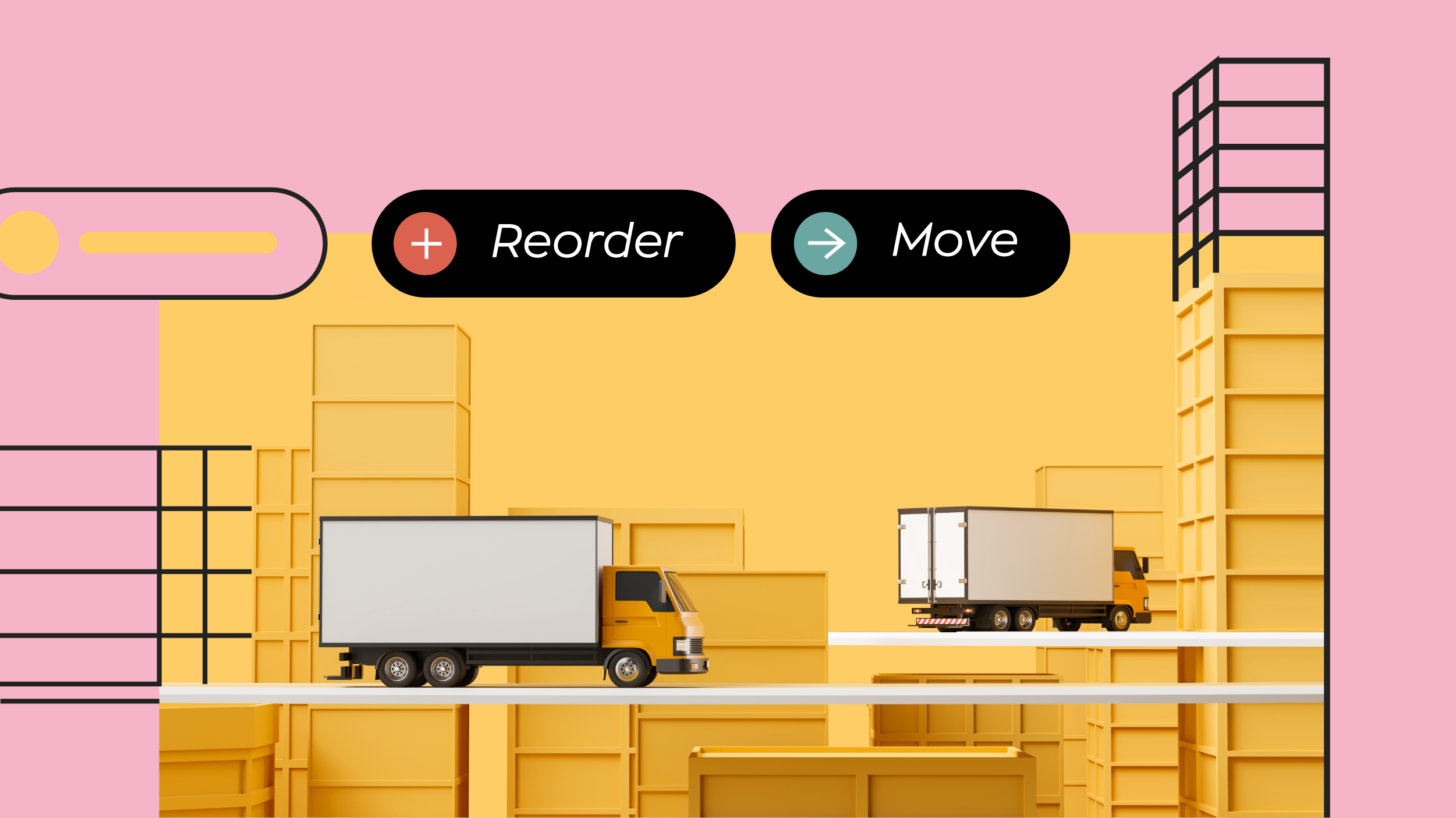Today we’ll be talking about ERP systems (Enterprise Resource Planning), sometimes referred to as ERP software. They’re similar to inventory management software, but there are some important distinctions. It’s generally accepted that an ERP system is “more powerful” than inventory management software, but what exactly does that mean?
In this article, we’ll explain the differences between the two, and answer some questions along the way.
What is an ERP system?
The first enterprise resource planning system made its appearance in the 1990s, and many more entered the market soon afterward. As the name suggests, an ERP system is a tool (usually ERP software) that large businesses use to manage their resources. Keep in mind that in this context, “resources” refers to a lot of things, not just capital or inventory.

It helps to think of ERP systems as an all-encompassing bookkeeping system. On top of performing the duties of standard inventory management systems, ERP systems integrate with as many parts of a business as possible. This includes (but is not limited to) things like payroll and managing customer relations.
Given the apparent overlap between these two systems, some might ask: why use anything but an ERP system? There are a lot of reasons, but it all comes down to the needs of individual businesses.
ERP systems are for large businesses
The bottom line is that not every business needs the amount of raw power that an ERP system offers. These systems are designed to be an all-in-one solution for issues that large businesses face on a day-to-day business. There’s some overlap, but generally speaking, smaller businesses don’t really face the same issues.
Furthermore, enterprise resource planning software is prohibitively expensive for smaller businesses. Experts estimate that ERP systems cost anywhere between $150,000 and $750,000 annually. And this is for medium-sized businesses; larger businesses may need to pay even more.
There are also maintenance and implementation costs to consider. You may need new servers, more IT people, and even tech training experts– all of which cost money.

That sounds like a lot (and it is), but there’s a good reason for it. The all-encompassing nature of ERP systems means that they save businesses time (and by extension, money) by reducing manual labor.
By reducing the amount of necessary menial work, businesses save money in the long run. Instead of spending hours filing paperwork each week, employees can use that time to complete other, more important tasks.
Smaller businesses often just need warehouse management software
Generally speaking, smaller businesses also operate on a much smaller scale. They usually have fewer employees, meaning that bookkeeping isn’t anywhere near as time-consuming. As a result, implementing (and renewing) ERP software loses them money in the long run. And considering the price tag, quite a bit of it.
Even putting aside the money part of the equation, there are other reasons that small businesses should stick to IMS.
First, because ERP systems affect business processes on a large scale, they can be difficult to implement. On top of that, they pose a bit of a learning curve. These two factors together can affect short-term performance, and if not kept in check, can cause long-lasting damage.
Second, it takes time for an ERP system to do its job. Sometimes it takes years for businesses to see significant returns on their investment. Larger businesses might be able to stomach the cost for some time, but smaller businesses usually can’t. To illustrate, here are some pros and cons of implementing an ERP system:

Inventory management software, on the other hand, is relatively inexpensive. Most cost a couple of hundred dollars per month– a fraction of the cost of ERP systems. Not to mention many of these systems– including inFlow– are meant to perform a lot of the same functions as ERP software. For example things like inventory tracking, creating bill of materials (BOMs), barcoding capabilities, generating reports, and more.
As a result, warehouse management software strikes a perfect balance of affordability and usability at a fraction of the price.
What types of businesses need an ERP system?
Businesses that truly need an ERP system generally fall into a few categories. They’ve either outgrown typical inventory management software and need something more inclusive, or they have a lot more variables to deal with. Think of it like this:
Businesses that focus on selling products only need to worry about a few things– like managing inventory and tracking sales.
On the other hand, businesses that buy raw materials and manufacture products in-house have more to keep track of. They need to track input and output, and they probably manage many different types of workers.
It’s possible to handle all these different variables with separate systems, but this could create more work instead of less. Employees would need to switch between interfaces frequently, and these different systems might not even be compatible with one another.
For big businesses that deal with a lot of different variables, implementing an ERP system saves them money. Because of this, certain industries tend to gravitate towards ERP systems more than others. Examples would be fields like healthcare, automotive manufacturing, and industrial construction.
Inventory management software is more flexible
Another thing to consider is the rigidity of an ERP system. They’re meant to be all-inclusive systems that handle as many parts of a business as possible.
As a result, ERP systems both process and produce massive amounts of data; ranging from customer information to sales reports. Because they process so much data, there’s not a lot of room for customization or flexibility.

Integrating an ERP system into an already-existing business can be time-consuming and expensive. On top of this, most businesses don’t see the benefits of an ERP system until years later.
ERP software and inventory management software continue to grow
Considering the continued growth of retail and ecommerce, the need for both enterprise resource planning software and inventory management software will only increase.
It’s true that the “ultimate goal” of a business is to make money. At the same time, businesses that grow too quickly or too much can quickly find themselves suffering from success. While one business may see the benefits of ERP software, another may find inventory management software is more suited to their needs.
ERP systems have a very clear target audience: businesses that are just too big for anything else to make sense. It’s more cost-efficient for companies of this size to consolidate as many parts of their business into one place. Inventory management software caters to small and medium-sized businesses that need most, but not all, the functionality of a full-blown ERP system.
If your business has grown so much that it needs an ERP system, you have a lot of options available. Researching ERP systems used by other businesses might provide some insight.
Keep in mind, though, that every business has different needs. What works for one business might not work for another. And considering how much an ERP system costs, choosing the wrong one– even briefly– often leads to larger issues.

Ok